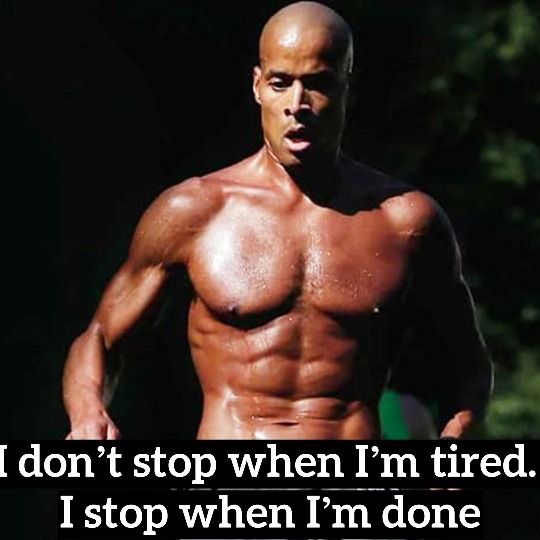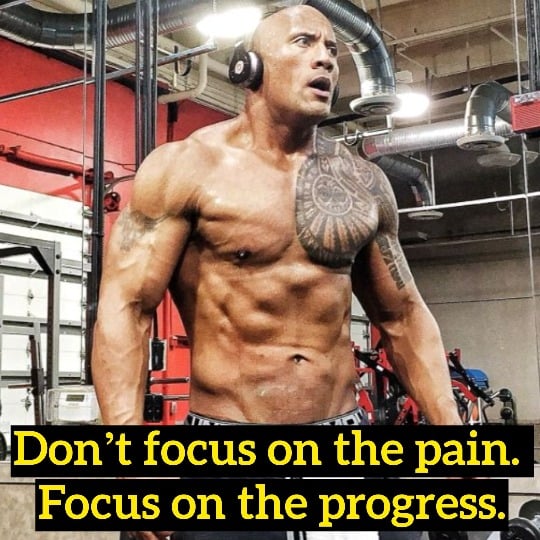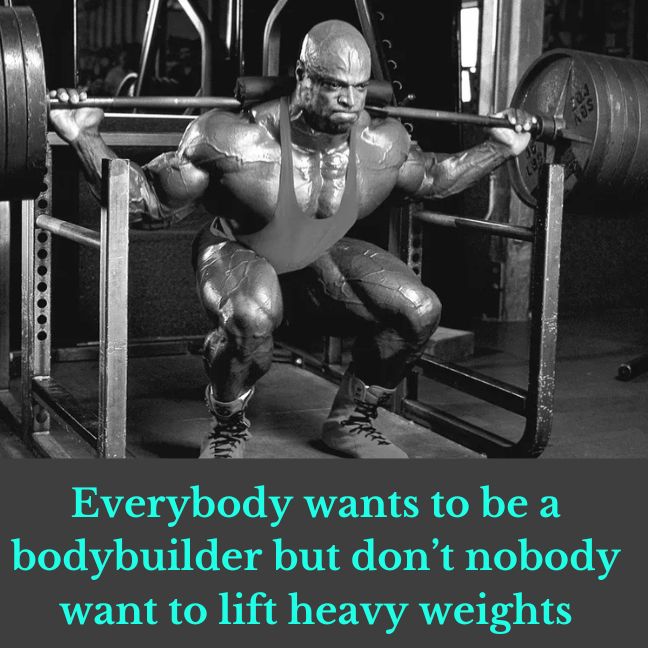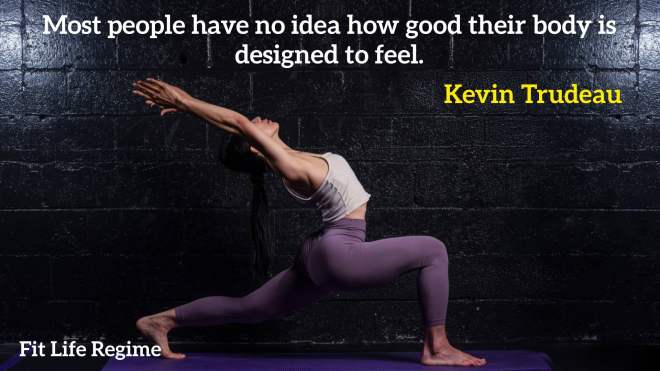If you want to go to the gym and exercise, you know how important it is to prime your mind so that you can endure a tough workout.
Your mind is a powerful tool and by filling it with positive messages, phrases, and sayings, they can help motivate you to keep going when you want to give up.
Motivational and inspirational gym workout quotes from some legendary people, either gently hinting or loudly proclaiming that if you want fitness, you must first make a conscious decision to be healthy and fit.
I hope these workout motivational quotes will make you want to work hard to get in shape.

Gym Workout Motivational Quotes
Here are motivational gym quotes that will motivate you and others to live a healthy and happy life.

1. “I don’t stop when I’m tired. I stop when I’m done.” – David Goggins

2. ¨Pain is temporary. Quitting lasts forever.¨ – Lance Armstrong

3. “Don’t focus on the pain. Focus on the progress.” – Dwayne Johnson

4. ¨The pain you feel today will be the strength you feel tomorrow.¨ – Arnold Schwarzenegger

5. Everybody wants to be a bodybuilder but don’t nobody want to lift heavy weights!“- Ronnie Coleman

6. “All successes begin with Self-Discipline. It starts with you.” – Dwayne Johnson

7. Winners train, losers complain.” – Robin Sharma

8. “If you think lifting is dangerous, try being weak. Being weak is dangerous.” – Bret Contreras

9. “We are what we repeatedly do. Excellence then is not an act but a habit.”– Aristotle

10. “Take care of your body. It’s the only place you have to live in.” – Jim Rohn
11. ¨Exercise is king. Nutrition is queen. Put them together and you’ve got a kingdom.¨ – Jack LaLanne
12. ¨Reading is to the mind what exercise is to the body.¨- Joseph Addison
13. Movement is a medicine for creating change in a person’s physical, emotional, and mental states.
– Carol Welch
14. “I never listened to anyone who said I can’t do something.” – Arnold Schwarzenegger
15. “Strength does not come from physical capacity. It comes from an indomitable will.” —Mahatma Gandhi
16. “Do what you have to do until you can do what you want to do.” – Oprah Winfrey
17. “No matter how many mistakes you make or how slow you progress, you are still way ahead of everyone who isn’t trying.” – Tony Robbins
18. “Just believe in yourself. Even if you don’t pretend that you do and, and some point, you will.” –Venus Williams
19. “All great achievements require time.” – Maya Angelou
20. “Bodybuilding is an art, your body is the canvas, weights are your brush and nutrition is your paint. We all have the ability to turn a self-portrait into a masterpiece.“- Kai Greene
“Fall in love with taking care of yourself. Mind. Body. Spirit.” – Unknown

Know More: 101 Inspirational Quotes On Health, Wealth And Happiness
Workout Motivation Quotes To Stay Fit
Staying motivated to work out can be challenging, especially when you’re tired or discouraged. However, motivational gym quotes help you stay on track and focused on your fitness goals.

21.¨ Blood, sweat and respect. First two you give. Last one you earn.¨ – The Rock
22. Working hard is not a waste of time, but a state of mind. Keep pushing your limits until you reach the edge. Then be kind and rewind.“ – Ana Claudia Antunes
23. ¨Most people fail, not because of lack of desire, but, because of lack of commitment.¨ – Vince Lombardi
24. “If you really want to do something, you’ll find a way. If you don’t, you’ll find an excuse.” – Dwayne Johnson
25. “If a man achieves victory over this body, who in the world can exercise power over him? He who rules himself rules over the whole world.“- Vinoba Bhave
26. “For me, life is continuously being hungry. The meaning of life is not simply to exist, to survive, but to move ahead, to go up, to achieve, to conquer.“- Arnold Schwarzenegger
27. “Action is the foundational key to all success.”- Pablo Picasso
28. ¨Increased physical activity enhances positive energy.¨ – Lailah Gifty Akita
29. “There’s no secret formula. I lift heavy, work hard, and aim to be the best.” – Ronnie Coleman

30. Physical fitness is the first requisite of happiness.” – Joseph Pilates
31. ¨Put all excuses aside and remember this: You are capable.¨ – Zig Ziglar
32. ¨Confidence comes from discipline and training.¨ – Robert Kiyosaki
33. “The purpose of training is to tighten up the slack, toughen the body, and polish the spirit.¨ – Morihei Ueshiba
34 “It is health that is real wealth and not pieces of gold and silver.” – Mahatma Gandhi
35. “The groundwork for all happiness is good health.” – Leigh Hunt
36. ¨Fitness is not about being better than someone else. It’s about being better than you used to be.¨ – Khloe Kardashian
37. “The greatest of follies is to sacrifice health for any other kind of happiness.” – Arthur Schopenhauer
38. “Those who do not find time for exercise will have to find time for illness.” – Edward Smith, Stanley
39. “The difference between the impossible and the possible lies in a person’s determination.” —Tommy Lasorda

40. “The reason I exercise is for the quality of life I enjoy.” – Kenneth H. Cooper
41. “In training, you listen to your body. In competition, you tell your body to shut up.” – Rich Froning Jr.
42. “The secret of health for both mind and body is not to mourn for the past, not to worry about the future, or not to anticipate troubles, but to live the present moment wisely and earnestly.” – Siddartha Guatama Buddha
43. “A fit, healthy body that is the best fashion statement.” – Jess C. Scott
44. “Bodybuilding is much like any other sport. To be successful, you must dedicate yourself 100% to your training, diet and mental approach.¨ – Arnold Schwarzenegger

45. “If you don’t find the time, if you don’t do the work, you don’t get the results.” – Arnold Schwarzenegger
46. There are no shortcuts—everything is reps, reps, reps.”- Arnold Schwarzenegger
47. “What is called genius is the abundance of life and health.” – Henry David Thoreau
48. ¨Get comfortable with being uncomfortable¨ – Jillian Michaels
49. “Don’t be afraid to be ambitious about your goals. Hard work never stops. Neither should your dreams.” – Dwayne Johnson

50. “Wake up determined. Go to bed satisfied.” – Dwayne Johnson
Quotes For Gym Workouts To Keep You Motivated
Working out regularly is essential for maintaining good health and fitness. There are many gym quotes and fitness motivational quotes that can keep you motivated and focused on your fitness goals.
I hope that you are finding this collection of gym workouts and fitness motivational quotes to be of great value to you.
51. “Success at anything will always come down to this: focus and effort. And we control both.” – Dwayne Johnson
52. “The first step to achieving your goal, is to take a moment to respect your goal. Know what it means to you to achieve it.” – Dwayne Johnson
53. “There is no substitute for hard work. Always be humble and hungry.” – Dwayne Johnson
54. “Good health and good sense are two of life’s greatest blessings.” – Publilius Syrus
55. “All progress takes place outside the comfort zone.”- Michal Joan Bobak
56. ¨Those who think they have not time for bodily exercise will sooner or later have to find time for illness.¨ – Edward Stanley
57. “Doctors won’t make you healthy. Nutritionists won’t make you slim. Teachers won’t make you smart. Gurus won’t make you calm. Mentors won’t make you rich. Trainers won’t make you fit. Ultimately, you have to take responsibility. Save yourself.” – Naval Ravikant
58. “Discipline is doing what you hate to do, but nonetheless doing it like you love it.”- Mike Tyson
59. “A healthy body is a guest-chamber for the soul; a sick body is a prison.” – Francis Bacon

60. “Health and intellect are the two blessings of life.” – Menander
61. “Health is a vehicle, not a destination.” – Joshua Fields Millburn
62. “Success isn’t overnight. It’s when everyday you get a little better than the day before. It all adds up.” – Dwayne Johnson
63. “In a disordered mind, as in a disordered body, soundness of health is impossible.” – Marcus Tullius Cicero
64. “Your health is what you make of it. Everything you do and think either adds to the vitality, energy, and spirit you possess or takes away from it.” – Ann Wigmore
65. “Give a man health and a course to steer, and he’ll never stop to trouble about whether he’s happy or not.” – George Bernard Shaw
66. “Health is the first muse, comprising the magical benefits of air, landscape, and bodily exercise on the mind.” – Ralph Waldo Emerson
67. “Of course it’s hard. It’s supposed to be hard. If it were easy, everybody would do it. Hard is what makes it great.“- Tom Hanks
68. “True enjoyment comes from activity of the mind and exercise of the body; the two are united.”- Alexander Von Humboldt
69. “Success isn’t always about greatness. It’s about consistency. Consistent hard work gains success. Greatness will come.“ – Dwayne “The Rock” Johnson

70. “The five S’s of sports training are: stamina, speed, strength, skill, and spirit; but the greatest of these is spirit.” – Ken Doherty
Fitness Quotes To Stay Motivated For Gym Workout
When you need extra energy to do a workout, having motivational fitness quotes can help a lot.
71. “Health is a state of complete harmony of the body, mind, and spirit. When one is free from physical disabilities and mental distractions, the gates of the soul open.” – B.K.S. Iyengar
72. “Man needs difficulties; they are necessary for health.” – Carl Jung
73. “The greatest miracle on Earth is the human body. It is stronger and wiser than you may realize, and improving its ability to self–heal is within your control.” – Dr. Fabrizio Mancini
74. “Our bodies are our gardens – our wills are our gardeners.” – William Shakespeare
75. “In fitness, there are no shortcuts. It involves immense discipline and hard work.“- Mahesh Babu
76. “No pain, no gain. Shut up and train.“- Unknown
77. “It is exercise alone that supports the spirits, and keeps the mind in vigor.” – Marcus Tullius Cicero
78. “A life without health is like a river without water.” – Maxime Lagacé“
79. “If I can see it and believe it, then I can achieve it.”― Arnold Schwarzenegger
80. A fit body, a calm mind, a house full of love. These things cannot be bought – they must be earned.” –Naval Ravikant

81. “The more you understand yourself, the more silence there is, the healthier you are.” – Maxime Lagacé
82. ¨Great works are performed, not by strength, but by perseverance.¨ – Samuel Johnson
83. “Keeping your body healthy is an expression of gratitude to the whole cosmos – the trees, the clouds, everything.” – Thich Nhat Hanh
84. “Excuses don’t kill the fat, exercises do.“– Amit Kalantri
85. “I’m a big believer in hard work, grinding it out, and not stopping until it’s done.”― Arnold Schwarzenegger
85. “It is well to be up before daybreak, for such habits contribute to health, wealth, and wisdom.” – Aristotle
86. “The really important thing is not to live, but to live well and to live well means the same thing as to live honourably or rightly.” – Socrates
87. ¨If we could give every individual the right amount of nourishment and exercise, not too little and not too much, we would have found the safest way to health.¨ — Hippocrates
88. “Fitness is like a relationship. You can’t cheat and expect it to work.”- Unknown
89. ¨Physical fitness is not only one of the most important keys to a healthy body, it is the basis of dynamic and creative intellectual activity.¨ – John F. Kennedy
90. “I do it as a therapy. I do it as something to keep me alive. We all need a little discipline. Exercise is my discipline.“- Jack Lalanne

Gym Motivation Quotes to Inspire Workouts
We all have days when we need a little extra push to get to the gym and give it our all.
Do you ever experience those moments when you are feeling fatigued or unmotivated, and suddenly, your workout becomes a daunting task instead of a stimulating one? That is where inspirational gym motivation quotes can make all the difference. The right words can change your mindset and give you new energy and drive.
91. “Being negative and lazy is a disease that leads to pain, hardships, depression, poor health, and failure. Be proactive and give a damn to achieve success!“- Phil Heath
92. “Nothing is more fatal to health than an over the care of it.”- Benjamin Franklin
93. “Today I will do what others won’t, so tomorrow I can accomplish what others can’t.“- Jerry Rice

94. ¨Success is what comes after your stop making excuses.¨ – Luis Galarza
95. “Your body is a piece of art but it’s always a work in progress. You are never done improving your symmetry and eliminating weak points.“- Morgan Aste
96. “If you want to turn a vision into reality, you have to give 100% and never stop believing in your dream.”― Arnold Schwarzenegger
97. “Your body holds deep wisdom. Trust in it. Learn from it. Nourish it. Watch your life transform and be healthy.” – Bella Bleue.
98. “The higher your energy level, the more efficient your body. The more efficient your body, the better you feel and the more you will use your talent to produce outstanding results.” – Tony Robbins
99. “Your health is an investment, not an expense.” – Unknown
100. “Walking is the best possible exercise. Habituate yourself to walk very far.” – Thomas Jefferson

Gym Quotes to Keep You Going Strong
As Promise, I have Provided the Best Inspirational Quotes on health and fitness quotes, but my mind Pushing me to give you more of the best Workout Quotes.
So, I added some other great quotes about gym workouts and fitness motivation below.
101. “If we are creating ourselves all the time, then it is never too late to begin creating the bodies we want instead of the ones we mistakenly assume we are stuck with.” – Deepak Chopra
102. Lack of activity destroys the good condition of every human being, while movement and methodical physical exercise save it and preserve it.
–Plato
103. “The best investment you’ve ever make is your own Health.” – Unknown
104. “Health is not valued until sickness comes. ” –Thomas Fuller
105. “When you hit failure, your workout has just begun.“– Ronnie Coleman
106. “Love, success, family and friends all come after my health. No health, no enjoyment.” – Maxime Lagacé
107. “Most people have no idea how good their body is designed to feel.” – Kevin Trudeau

108. “Eat right, exercise regularly, die anyway.” – Unknown
109. “Having a healthy mind is just as important as a healthy body.” – Unknown
110. “Cheerfulness is the best promoter of health and is as friendly to the mind as to the body.” – Joseph Addison
111. “If you think wellness is expensive, try illness.” – Unknown
112. “Health and cheerfulness are brothers.” – William Hardcastle Browne
113. “Great health starts with a great sleep.” – Dan Go
114. “You shall gain, but you shall pay with sweat, blood, and vomit.” – Pavel Tsatsouline
115. “Most of us would be upset if we were accused of being ‘silly.’ But the word ‘silly’ comes from the old English word ‘selig’ and its literal definition is ‘to be blessed, happy, healthy and prosperous.” – Zig Ziglar
116. “The only way to keep your health is to eat what you don’t want, drink what you don’t like, and do what you’d rather not.” – Mark Twain
117. “To ensure good health: eat lightly, breathe deeply, live moderately, cultivate cheerfulness, and maintain an interest in life.” – William Londen
118. “The greatest of follies is to sacrifice health for any other kind of happiness.” – Arthur Schopenhauer
119. “Those who do not find time for exercise will have to find time for illness.” – Edward Smith, Stanley
120. “When the heart is at ease, the body is healthy.” Chinese prover
121. “Let food be thy medicine and medicine be thy food.” – Hippocrates
122. “The only place where success comes before work is in the dictionary.” – Vidal Sassoon
123. “Gold medals aren’t really made of gold. They’re made of sweat, determination, and a hard-to-find alloy called guts.” – Dan Gable
124. “Fitness is like a relationship. You can’t cheat and expect it to work.” – Unknown
125. “You have to expect things of yourself before you can do them.” – Michael Jordan
126. “I hated every minute of training, but I said, ‘Don’t quit. Suffer now and live the rest of your life as a champion.” – Muhammad Ali
127. “The clock is ticking. Are you becoming the person you want to be?” – Greg Plitt
128. “The body achieves what the mind believes.” – Unknown
129. “You can either suffer the pain of discipline or the pain of regret.” – Jim Rohn
130. “If you think lifting is dangerous, try being weak. Being weak is dangerous.” – Bret Contreras
Feel Unstoppable in Your Workouts with Gym Quotes
If you want to feel unstoppable in your workouts, gym quotes can inspire and motivate you. You can use these quotes to stay focused and energized when you need a boost or to get through a tough workout.
131. “Success usually comes to those who are too busy to be looking for it.” – Henry David Thoreau
134. “The only bad workout is the one you didn’t do.” – Unknown
135. “You must do the thing you think you cannot do.” – Eleanor Roosevelt
136. To keep the body in good health is a duty…otherwise, we shall not be able to keep the mind strong and clear.” – Buddha
137. “Exercise should be regarded as a tribute to the heart.” – Gene Tunney
138. “Motivation is what gets you started. Habit is what keeps you going.” – Jim Ryun
139. “Success is the sum of small efforts, repeated day in and day out.” – Robert Collier
140. “Sweat is just fat crying.” – Unknown
141. “Fatigue makes cowards of us all.” – Vince Lombardi
142. “Strength does not come from winning. Your struggles develop your strengths. When you go through hardships and decide not to surrender, that is strength.” – Arnold Schwarzenegger
143. “You have to believe in yourself when no one else does – that makes you a winner right there.” – Venus Williams
144. “The only way to prove that you’re a good sport is to lose.” – Ernie Banks
145. “Age is no barrier. It’s a limitation you put on your mind.” – Jackie Joyner-Kersee
146 “The clock doesn’t dismiss you from the gym. You do.” – Unknown
147. “You beat cancer by how you live, why you live and in the manner in which you live.” – Stuart Scott
148. “Workouts don’t make you tired, they make you better.” – Unknown
149. “Pain is temporary. It may last a minute, or an hour, or a day, or a year, but eventually it will subside and something else will take its place. If I quit, however, it lasts forever.“- Lance Armstrong
150. “Exercise should be regarded as a tribute to the heart.” – Gene Tunney
151. “There may be people that have more talent than you, but there’s no excuse for anyone to work harder than you do.” – Derek Jeter
153. “Progress will come in inches. Tackle your fitness journey one step at a time. Stay patient and consistent.” – Jillian Michaels
I hope you enjoyed this collection of the best gym workout and fitness motivational quotes. Do you have a favorite quote that always gets you motivated to work out?
“Stay Fit, Live a Happy and Healthy Life.” – Fit Life Regime

Manish is a NASM-certified fitness and nutrition coach with over 10 years of experience in weight lifting and fat loss fitness coaching. He specializes in gym-based training and has a lot of knowledge about exercise, lifting technique, biomechanics, and more.
Through “Fit Life Regime,” he generously shares the insights he’s gained over a decade in the field. His goal is to equip others with the knowledge to start their own fitness journey.
